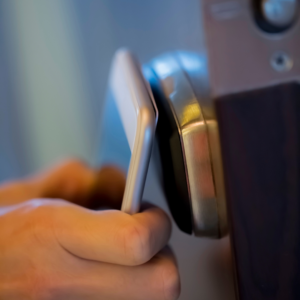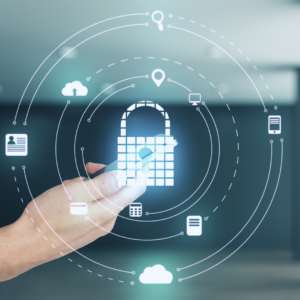 As the world becomes increasingly interconnected, traditional lock-and-key access control methods are giving way to more convenient and efficient solutions. Mobile access control, powered by digital credentials on smartphones and wearable devices, is emerging as a game-changer for managing physical access to buildings and facilities. Intaus Group wanted to explore the benefits of mobile access control from a strata maintenance standpoint.
As the world becomes increasingly interconnected, traditional lock-and-key access control methods are giving way to more convenient and efficient solutions. Mobile access control, powered by digital credentials on smartphones and wearable devices, is emerging as a game-changer for managing physical access to buildings and facilities. Intaus Group wanted to explore the benefits of mobile access control from a strata maintenance standpoint.
What Is Mobile Access Control?
Mobile access control allows authorised individuals to enter sites, buildings, or rooms using their smartphones instead of traditional keys, badges, or access cards. Here’s how it works:
- Digital Credentials: Users download a mobile app that acts as a “virtual key.” This app securely stores their access credentials.
- Bluetooth Connectivity: Mobile access control often relies on Bluetooth technology. When a user approaches a gate, door, or barrier, their smartphone communicates with a mobile-capable reader, granting access.
- Other Methods: Besides Bluetooth, Wi-Fi and Near Field Communication (NFC) can also facilitate mobile access control within a specific distance.
Why Choose Mobile Access Control?
Convenience
- User-Friendly: Residents and maintenance staff find mobile access more convenient than carrying physical cards. No more fumbling for keys or badges!
- Efficient Entry: Swift entry and exit streamline daily operations, benefiting both residents and maintenance personnel.
Sustainability
- Reduced Waste: Mobile access eliminates the need for plastic access cards, contributing to environmental sustainability.
- Energy Savings: Smartphones consume less energy than traditional card readers, aligning with green initiatives.
Cost-Effectiveness
- Lower Maintenance Costs: Fewer physical components mean reduced wear and tear, resulting in long-term cost savings.
- No Lost Cards: Residents won’t misplace their virtual keys, reducing replacement costs.
Enhanced Security
- Secure Encryption: Mobile credentials use robust encryption, making them harder to clone or compromise.
- Real-Time Monitoring: Strata managers can track access events in real time, enhancing security protocols.
Challenges and Considerations
 While mobile access control offers numerous benefits, strata managers should consider the following:
While mobile access control offers numerous benefits, strata managers should consider the following:
Integration: Ensure seamless integration with existing systems and databases.
User Training: Educate residents and maintenance staff on using mobile access effectively.
Backup Plans: Have contingency plans for network outages or smartphone malfunctions.
Incentives for upgrading to mobile access solutions
Upgrading to mobile access solutions offers users enhanced convenience and experience as the primary benefit. The advantages of shifting to mobile access include bolstered security, streamlined credential issuance and management, and cost-effectiveness.
Despite organisations showing interest in mobile access, the expenses associated with transitioning to these solutions and the challenges of adapting to a new system hinder some from making the upgrade.
Sustainable and environmentally responsible to merge old and new
Emphasis is placed on the importance of a new access control system’s ability to integrate with existing security platforms and accommodate future technologies. Sustainability is driving progress in access control, prompting organisations to enlist sustainability consultants for discussions on upgrading physical access control systems.
Mobile access control isn’t just about security; it’s a holistic solution that aligns with sustainability goals, reduces costs, and enhances convenience. Strata communities can embrace this technology to improve overall efficiency and resident satisfaction.
Intaus Group can assist you and your strata with the transition to mobile access control systems. If you are considering unlocking the future—one smartphone at a time, speak to our team today.